|
The Great Salt Pond St Maarten And
|
|
THE GREAT SALT POND - Cryatal Gold - The Life Saver... | |
|
|
|
|
This saught after (white gold) aboard schooners meant longer journeys at sea... They used salt to season their food. It was a Dutchman - Willem Beukelzoon who became famous for applying salt as a preservative. He invented the gutting of herring.
Herring caught at sea was immediately gutted and put in salt. The fish would be preserved and longer and lengthier trips could be made.
The shortage of world supplies was solved when the Dutch set foot on St. Maarten and discovered that they were salt ponds there. They organized the extraction of salt both on the French and Dutch side of the island and sold it to merchants in the Caribbean and in New England US. The Great Salt Pond had a continuous subterranean connection with the sea which kept them salted. In the early years of salt extraction, the salt was there for the shoveling along the banks of the salt pond. Later when the thick layer of salt had been removed by the colonists and with each rainfall the Great Salt Pond was filled with rain water and mud. To solve the problem dams were built and crystal ponds were created. The process consisted of scooping the water from one pond to the next, and in the last pond where the water was most concentrated a layer of salt of about 20 centimeters was formed. Particular care was taken when removing the layer to prevent disturbing the underlying mud. THE DISCOVERY OF THE CRYSTAL PONDS...
The crystal ponds were first discovered in 1831 and then the police gave permission for residents to build embankments for the cultivation of salt. The harvesting of the salt would take up six to seven months of the year and would employ up to five hundred persons. Children, freed men and slaves would all be involves in the labor. This network of people who worked in groups of ten to fifteen, worked in an unparalleled manner from the harvesting to the loading of the schooners parked in great bay. It involved collecting, cleaning, transporting to the banks by small boat where in turn it would be taken to Philipsburg to the salt piles by head. From there children would transport loads of about fifteen kilos per bag to oxen that would take it through the narrow alleys down to the shore line. A stronger set of boys would then row it out to the awaiting schooners out in the bay. CONSTRUCTION OF THE SALT FACTORY BEGAN...
The Salt factory was built in 1862 by Slotemaker and Ademante. It never functioned according to plan and was abandoned ten years later. These ruins can still be seen today at Sucker Garden. Much of the foundation and walls still remain in tact. Salt production on the Dutch side was discontinued in 1949 due to evaporation, pollution, loss of salt due to washing and poor crystallization. Figures then had shown that approximately 11 percent was loss due to sun, rain and wind. Salt production continued until the end of the 60’s when the ponds were filled to acquire flat land for the construction of an airport. In November 2004 the St. Maarten Monument Preservation Foundation took steps to preserve the old salt factory as a monument. The old Myth | |
T H E
P E A R L
O F
T H E
C A R I B B E A N |
Return To St Maarten's History.
Return From Salt Pond St Maarten To Discover-St.Maarten Home Page.



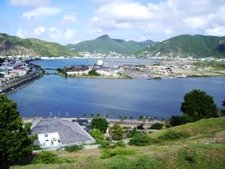
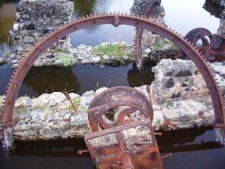
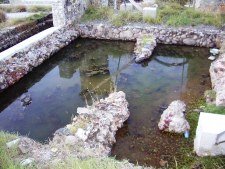
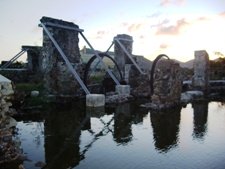




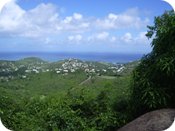




New! Comments
Have your say about St Maarten! Tell your FB friends about this page in the box below.